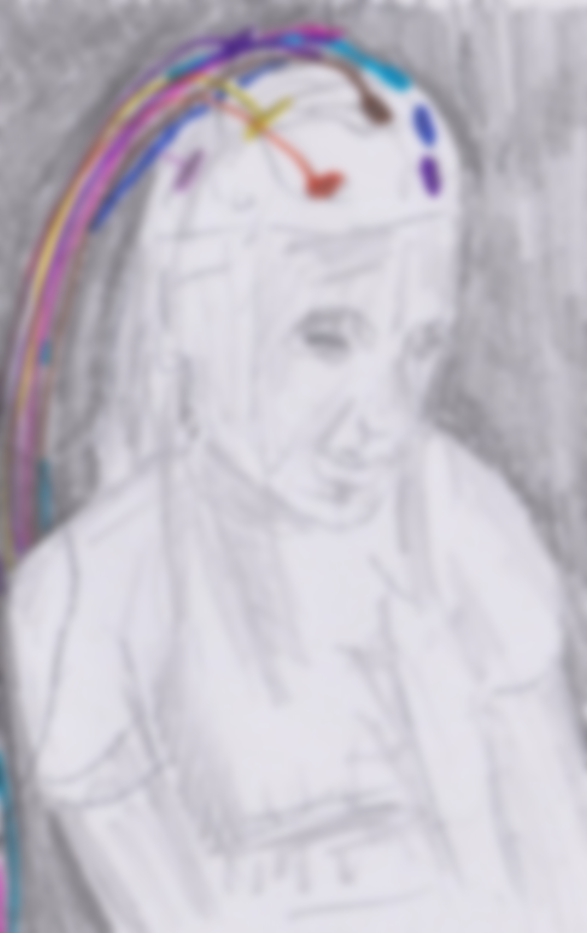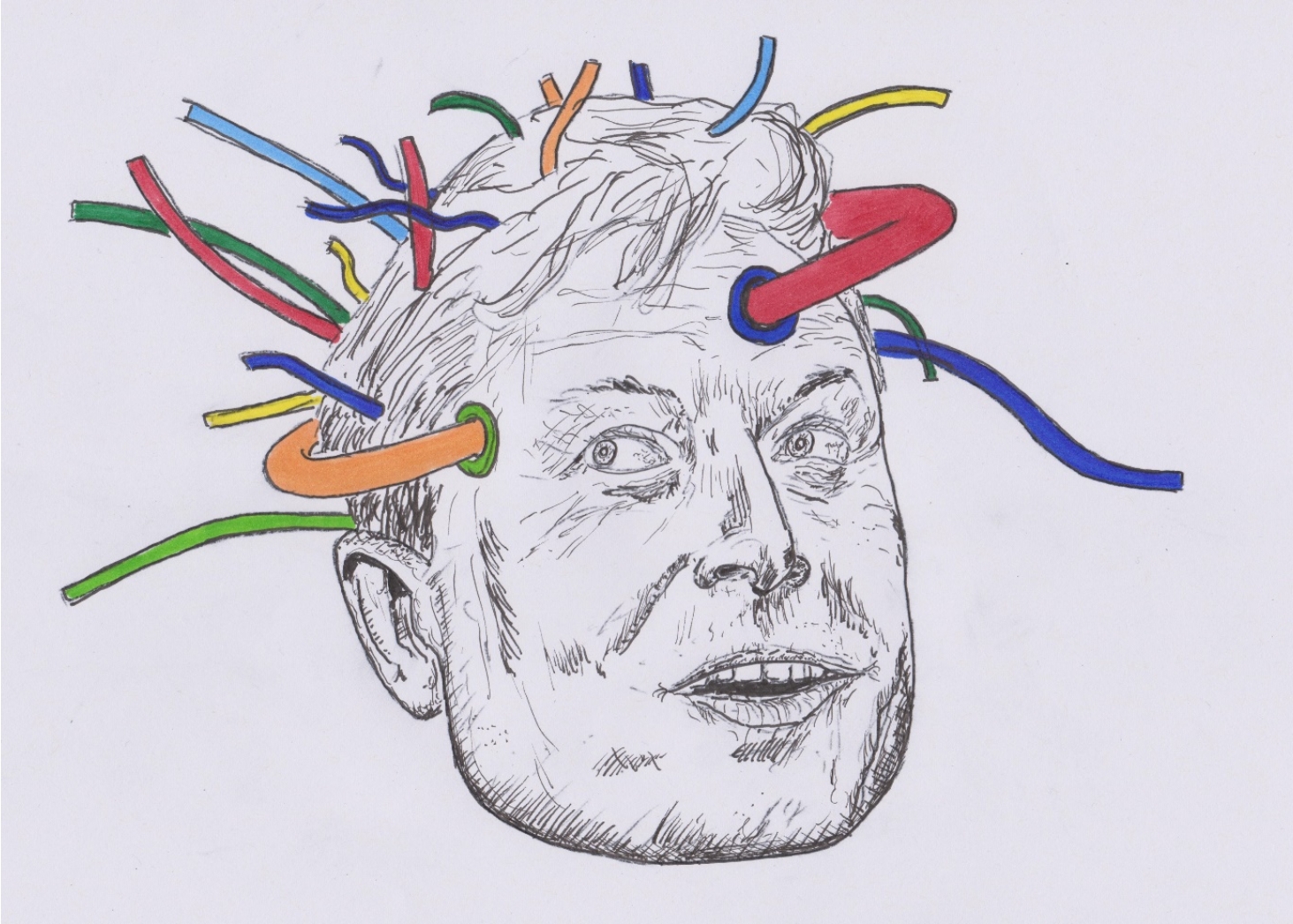Elimination of the need for instrumentalities
“Elegance is elimination.”
- Cristobal Balenciaga
In the previously mentioned film Forbidden Planet
, after Dr Morbius arrives on the planet Altair, he discovers a laboratory built by an advanced and long extinct civilisation of beings – the Krell
. One of the devices in this lab is a machine that can effectively boost a person’s intellectual capability. Morbius tries using it on himself and receives such a jolt from it that he is rendered unconscious for two weeks. However, his brave experiment was not in vain, since he found that he had, in fact, received a brain boost that had doubled his IQ (which, by the way, was what enabled him to tinker together Robby the Robot within a couple of weeks). It seems that the Krell spent quite a lot of time getting brain boosts and that they reached some dizzying intellectual heights – so much so that they eliminated the need for physical instrumentalities
. Wow, if you ask me that was a great move – imagine getting things done without having to break your back! (Personally, I would like to service my car without having to fool around with spanners and such.) It turns out that the Krell were controlling things remotely, if you will, using the power of thought. Unfortunately for them, it seems they forgot about the subconscious id – or the animal part of the mind (according to Freudian psychology, the id is the primitive/instinctual element of the human mind that hosts sexual/aggressive drives and hidden memories). Their ids turned around and created monsters that destroyed them. I am not sure if this is another manifestation of the Frankenstein Complex; but let’s consider the possibility of eliminating the need for physical instrumentalities without a consequent annihilation. Is there any possibility that we could implement the effects of tooling and instruments by thoughts rather than physical actions? In deciding questions of such possibilities, it is worth considering whether the proposed act contradicts any established laws of physics – if it does, then we can effectively say it is not possible. However, if it does not, we can say that it is in fact possible and, more than that, that we expect it will, at some time in
the future, be commonplace. ‘Telekinesis’ is defined as the supposed ability to move objects at a distance by mental power. We can ignore any supernatural connotations this word may have – we are not concerned with superstition or magic (although regarding the latter, it will be remembered that Clarke’s Third Law states that any sufficiently advanced technology is indistinguishable from magic). But moving things around by the power of thought is, in fact, not such a wacky idea and we don’t need to resort to the supernatural to imagine how it might be achieved. It is well known that brain activity can be detected using suitable instruments. According to Wikipedia: “Electroencephalography (EEG) is an electrophysiological monitoring method to record electrical activity of the brain.” Having a bit of an aversion to long words, I prefer to refer to it as detection of brainwaves – in any case, it is usually performed by simply placing electrodes directly on the scalp. EEG is frequently used to diagnose epilepsy through analysis of abnormalities in EEG readings; but is there any possibility that it could also offer potential to eliminate physical instrumentalities?


Electroencephalography (EEG) measures electrical activity of the brain and is usually performed by simply placing electrodes directly on the scalp. (Illustrations by author.)
In August 2019, I was endeavouring to present a paper at an optics/photonics conference that was being held at the Convention Center in San Diego. By the way, if you ask me, this is a great city – or America’s finest city, as the locals call it. If you ever visit, please do go to Balboa Park, which is a 1,200-acre historic urban cultural park. It boasts beautiful open space areas, gardens, and paths, as well as interesting buildings that contain museums, several theatres, and of course, the famous San Diego Zoo.
Part of Balboa Park, San Diego, California, where the 2019 photonics conference was held. Here is a photonics joke
:
A Photon checks into a hotel and the receptionist asks if he needs any help with his luggage. “No thanks,” says the Photon “I’m travelling light.” (Photograph by the author.)
As you can see below, I had a poster for the paper (which was about weed detection in grass using deep learning) and, as you can imagine, I was having a lot of trouble keeping order in all the crowds of people who were surging forward to see my paper (I wish). I waited quite a while but did eventually get to chat with a few interesting people. Patience is a virtue, I guess.
Me, waiting for the crowds to arrive, next to a poster for the paper I presented at the 2019 photonics conference. (Photograph by the author. I have compressed this picture horizontally, to make myself appear thinner!)
Anyway, in the quietude of the hall concerned, I noticed that the guy next to me was presenting a paper on, yes, you’ve guessed it, brainwave analysis. Thinking about it now, I am not sure what his work had to do with optics, but it was interesting. As far as I could see, the researcher was using deep learning for some form of data pre-processing. In other words, he was only doing some preliminary analysis rather than being able to detect specifics about thoughts. For example, he could not tell that his subject was thinking of ‘going for a walk in the countryside on a sunny day, while eating an ice-cream’ - it was more on the level of being able to determine whether the person was bored, or excited. Of course, it is early days; but it is known that brainwaves are divided into bandwidths (or frequencies, rather like the pitch of sounds in air), which may be related to their meaning. They seem to reflect a continuous spectrum of waves
(analogous to the continuous spectrum of colours in the rainbow), that may reflect our experiences of consciousness; from slow, well defined events - to fast, subtle, and complex interactions.
I suspect that once we know more about the actual associations of various features of complex brainwaves, it will prove possible to analyse them sufficiently to obtain useful thought information. Such a capability would obviously be a boon to those people suffering from serious paralysis who are unable to communicate conventionally.
It probably does not surprise you to know that this is another area where the future-thinker, Elon Musk, is setting the pace. He has set up a company called Neuralink which will supply a brain implant and the robotic device to implant it with the aim of helping such paralysed people. Work to date has involved tests with animals, including insertion of a Neuralink implant in a pig for two months, with the latter apparently remaining healthy. Musk has shown graphics which he says indicate the pig’s movements with a “high degree of accuracy”, and he says other graphics show electrodes influencing neurons. Neuralink has said it has received breakthrough device designation from the US Food and Drug Administration – which would certainly appear to boost its chances of being introduced in the USA (following clinical trials in humans). Neuralink is certainly ambitious - Matthew MacDougall, their head neurosurgeon, has said the device could allow it to interface with the brain’s motor cortex, as well as sensory information, hearing and visual processing. In fact, Musk has been quoted as saying: “You could solve blindness, paralysis, hearing just by interfacing with the cortex,” He has said that although initially the technology might be expensive, his aim is to get the price down to a few thousand dollars "inclusive of the automated surgery". Sounds good to me! Elon Musk is certainly a ‘get on with it’ kind of guy, as well as someone who has a great deal of forward vision – and I admire him for it. It is surely innovators like him who are going to be pivotal in realising our affordable Martian commute (as discussed above, his company SpaceX is currently working on a plan for a rocket to take humans to Mars). Perhaps technologies such as Neuralink’s could render the
communication blocks involved in ‘locked in syndrome’ a thing of the past – I certainly hope so. Regarding moving objects around by means of thought, the difficult part is capturing the thought’s intention, as just discussed.
Once a person’s wish is known, it would be a relatively simple task to employ robotics, automation, or even a simple transfer mechanism, to implement the required move of the object in question. There are, in fact, many applications in a wide range of sectors that could benefit very significantly from this kind of ability to move by the power of thought. In combination with suitable servos and/or hydraulic systems, such a capability could constitute an impressive and very helpful tool. We can imagine, for example, the construction worker on a building site who wishes that a huge concrete section could be transported to the top of a new building and, hey presto, a suitably equipped and interfaced crane could achieve this feat automatically. For a person from a previous era this would indeed appear like magic and it would surely constitute a step towards being able to eliminate industrial instrumentalities.

The billionaire entrepreneur Elon Musk is developing a brain-reading implant called Neuralink. (Illustration by the author.)
Many years ago when I was a small child, my Mother used to say to me: “I wonder what the next thing will be” (by which she meant the next striking technological innovation)…” They say it will be that you will be able to hear music in the mid-air”. I never realised it at the time, but what she was talking about was essentially the full elimination of the need for instrumentalities. I was going to end this chapter here, but again find myself under the necessity of stopping the press. A few days ago, I heard on the news about a new device that puts ‘music in your head’, without the need for headphones. Apparently, ‘sound beaming’ technology employs a 3D sensing module that tracks the user’s ear position and sends audio via ultrasonic waves, to create sound pockets by the ears. The result is sound that can be heard in stereo or a spatial 3-D mode that creates ‘360 degree’ sound around the listener. So, I guess Mum was right, and a device that allows you to listen to ‘music in the mid-air’, has been invented.





